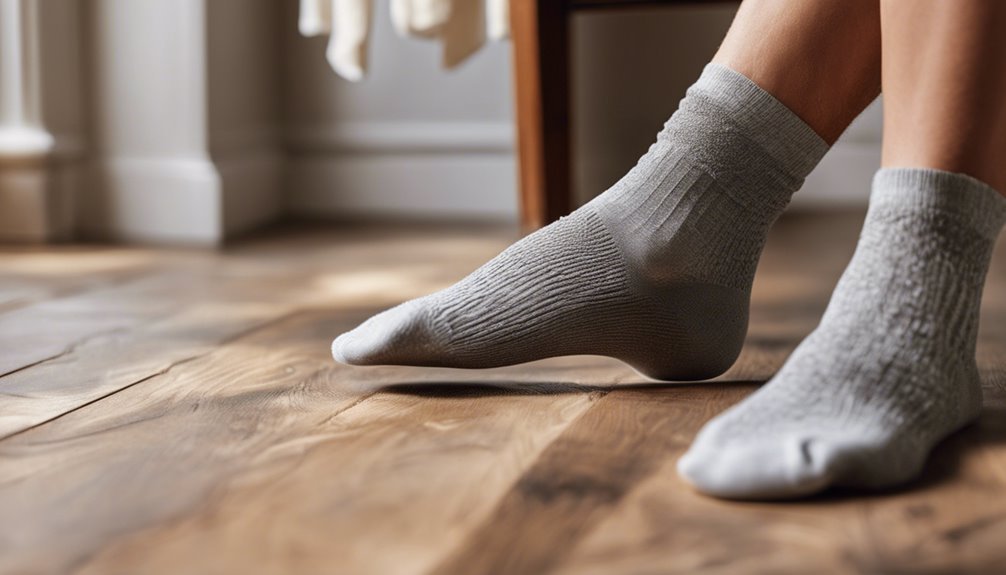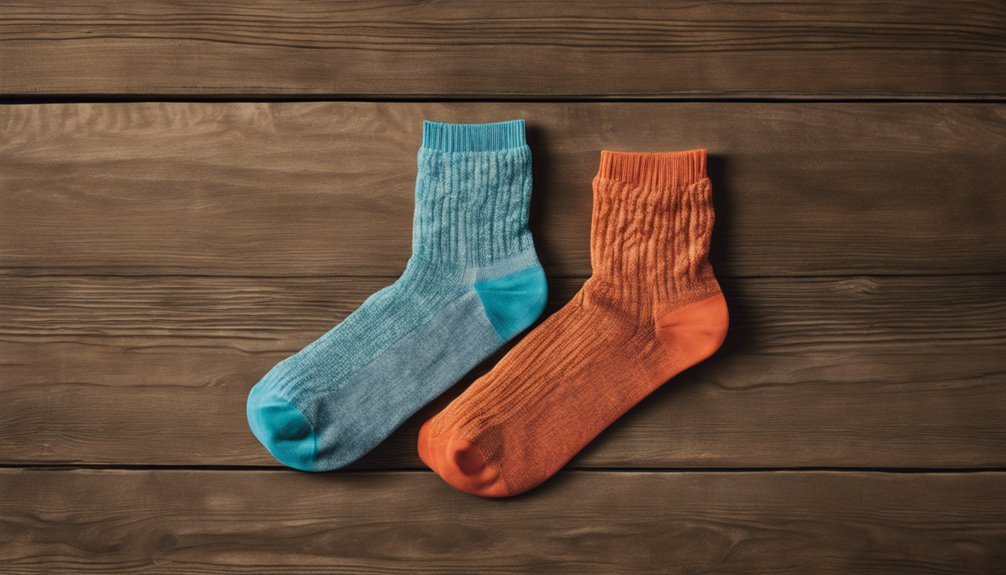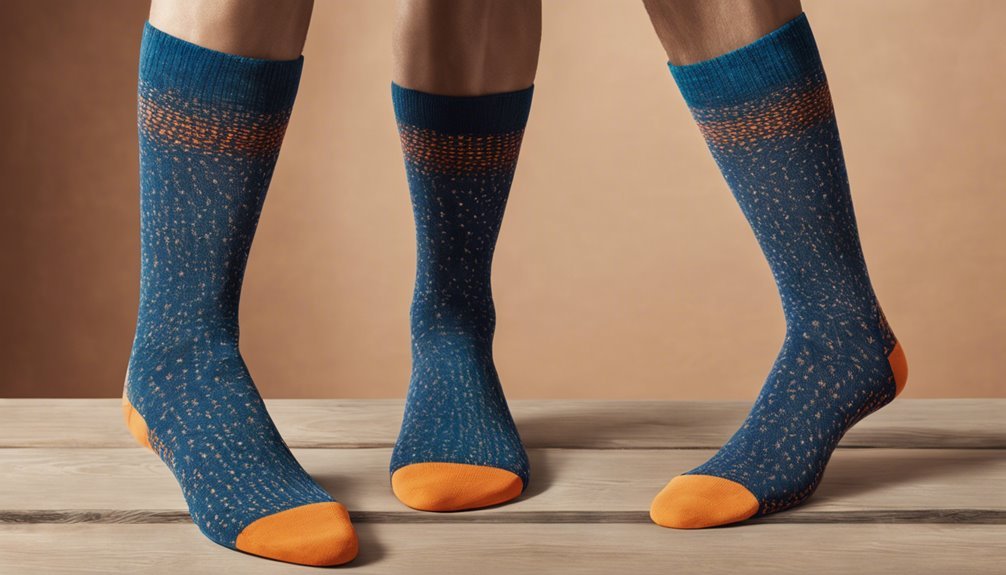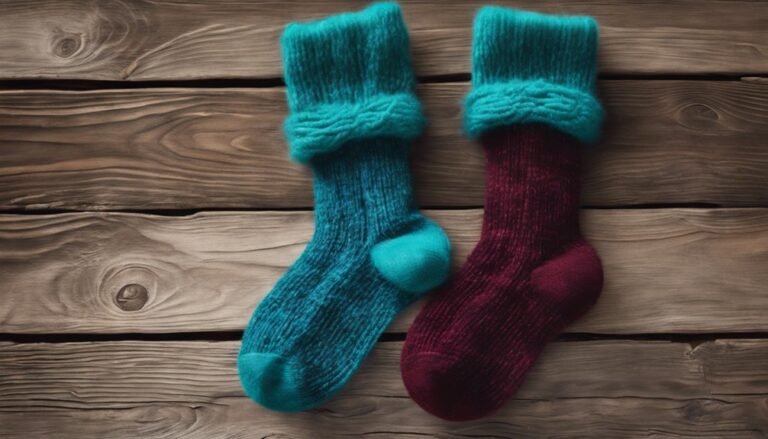Moisture-Wicking Socks vs. Anti-Blister Socks: Which Helps More?
When weighing moisture-wicking socks against anti-blister socks, consider your activity and comfort needs. Moisture-wicking socks excel in keeping your feet dry, pulling moisture away and enhancing breathability. On the other hand, anti-blister socks focus on reducing friction, which helps prevent blisters during high-intensity movements. The best choice ultimately depends on your specific activities and personal preferences. Exploring the features of both types can help you make a more informed decision.
Understanding Moisture-Wicking Socks

Moisture-wicking socks are designed to keep your feet dry and comfortable during physical activity. They utilize advanced fiber technology, which allows them to excel in moisture absorption. This means that when you sweat, these socks pull moisture away from your skin and transport it to the outer layer, where it can evaporate more easily. The construction of these socks often incorporates synthetic fibers, like polyester or nylon, which enhance their moisture-wicking properties compared to traditional cotton socks. By maintaining a drier environment, moisture-wicking socks help reduce the risk of blisters and discomfort during long periods of movement. Understanding how these socks function can empower you to choose the right pair for your active lifestyle, ensuring that your freedom of movement isn't compromised.
The Benefits of Moisture-Wicking Technology
When you wear moisture-wicking socks, you're not just enhancing your comfort; you're also promoting better breathability, which keeps your feet cooler during intense activities. This technology actively draws sweat away from your skin, reducing the growth of odor-causing bacteria. As a result, you can enjoy fresher, more comfortable feet throughout the day.
Enhanced Breathability and Comfort
While you might not think about your socks often, the choice between moisture-wicking and traditional fabrics can greatly impact your comfort during physical activities. Moisture-wicking socks use breathable materials that draw sweat away from your skin, ensuring your feet stay dry and comfortable. This technology enhances airflow, reducing the feeling of heaviness that can accompany damp socks. As a result, your overall comfort levels improve, allowing you to focus on your activities without the distraction of clammy feet. When you're engaged in sports or outdoor adventures, the right socks can make a significant difference in maintaining that essential feeling of freedom, ensuring you're not held back by discomfort or excessive moisture. Choose wisely to enhance your experience.
Reduced Odor and Bacteria
Although you might not realize it, the materials used in your socks play an essential role in combating odor and bacteria. Moisture-wicking technology is designed to draw sweat away from your skin, markedly enhancing odor control. By keeping your feet dry, these socks create an environment where bacteria struggle to thrive, leading to effective bacteria reduction. Traditional cotton socks tend to retain moisture, providing a breeding ground for odor-causing bacteria. On the other hand, synthetic fibers used in moisture-wicking socks actively fight against this issue, ensuring your feet feel fresh even during intense activities. Choosing the right pair of socks not only boosts your comfort but also promotes a healthier foot environment, giving you that desired freedom to move without worry.
Exploring Anti-Blister Socks
If you're prone to blisters during physical activities, exploring anti-blister socks is vital for your comfort and performance. These socks are designed using specialized anti-blister materials that minimize friction and moisture, which are the main culprits behind painful blisters. You'll find that sock thickness varies; thinner socks offer a snug fit and good moisture management, while thicker options provide extra cushioning. It's important to take into account your activity level and footwear when choosing the right thickness. By selecting the appropriate anti-blister socks, you can enhance your freedom of movement, allowing you to focus on your performance without the distraction of discomfort. Ultimately, investing in the right pair can greatly improve your overall experience during any physical endeavor.
Key Features of Anti-Blister Socks
When choosing the right anti-blister socks, several key features can greatly enhance your comfort and performance. Look for specific sock material types that prioritize breathability and moisture management, like merino wool or synthetic blends. These materials help reduce friction, a vital aspect of blister prevention techniques. Additionally, consider padded zones in high-friction areas, such as the heel and toe, which provide extra cushioning and protection. An anatomical fit is also essential; socks designed to contour to your foot shape prevent slippage and movement that can lead to blisters. Finally, seamless construction can minimize irritation caused by seams rubbing against your skin. By focusing on these features, you'll better equip yourself against blisters and enjoy your activities more freely.
Comparing Comfort and Performance

When you're considering comfort and performance in socks, moisture management techniques play an essential role in keeping your feet dry during activities. Additionally, the right cushioning and support can greatly affect how your feet feel over long periods, while fit and durability determine how well the socks withstand wear and tear. Understanding these elements will help you make an informed choice between moisture-wicking and anti-blister options.
Moisture Management Techniques
While comfort and performance are often intertwined, moisture management techniques in socks play a crucial role in enhancing both. Effective moisture control is essential for keeping your feet dry during activities. Moisture-wicking fabrics draw sweat away from your skin, promoting sweat management and reducing the risk of blisters. This is particularly important during long runs or hikes, where prolonged moisture can lead to discomfort. Anti-blister socks may feature specialized zones that trap moisture, but their effectiveness can vary. When choosing socks, consider how different materials and designs impact your experience. Ultimately, the right moisture management technique can make all the difference, allowing you to focus on your performance without the distraction of damp or irritated feet.
Cushioning and Support
Cushioning and support are critical factors in determining the overall comfort and performance of socks during physical activities. Different cushioning types, such as targeted padding in the heel and toe areas, can greatly enhance your foot's comfort while absorbing impact. If you're running or hiking, these cushioned zones help reduce fatigue. Additionally, varying support levels dictate how well your feet are stabilized; for instance, socks with arch support can prevent strain during long distances. When comparing moisture-wicking and anti-blister socks, consider how their cushioning and support align with your activities. Ultimately, the right combination can enhance not just your comfort but also your performance, allowing you to feel free and focused on your pursuits.
Fit and Durability
The way socks fit and their durability can greatly impact both comfort and performance, especially in demanding activities. A proper sock fit guarantees that your feet are snug without being overly tight, preventing unnecessary friction. Meanwhile, material durability is essential for withstanding wear and tear, especially during long adventures.
Consider these factors:
- Elasticity: Keeps socks in place, reducing slippage.
- Breathability: Allows moisture to escape, enhancing comfort.
- Reinforced areas: Protects high-wear zones, extending lifespan.
- Seam placement: Minimizes irritation, guaranteeing a smooth experience.
Ultimately, prioritizing sock fit and material durability means you can focus on your journey, free from distractions. Choose wisely, and your feet will thank you.
Making the Right Choice for Your Activities
How do you choose the right socks for your activities? It starts with understanding your activity-specific needs. If you're hitting the trails for a long hike, moisture-wicking socks made from synthetic blends can help keep your feet dry, reducing the risk of blisters. On the other hand, if you're engaging in high-intensity sports, anti-blister socks, often cushioned and seamless, can provide that extra layer of protection. Pay attention to sock material differences; merino wool offers temperature regulation and moisture management for varying climates, while polyester excels in quick-drying properties. Assess your preferences and the demands of your activity to make an informed choice. Ultimately, the right socks can enhance your comfort and performance, giving you the freedom to enjoy your pursuits fully.
Frequently Asked Questions
Can I Wear Moisture-Wicking Socks for Everyday Use?
Absolutely, you can wear moisture-wicking socks for everyday use. They provide excellent everyday comfort and enhance daily performance by keeping your feet dry, reducing odor, and preventing discomfort during various activities throughout your day.
How Do I Properly Care for My Anti-Blister Socks?
Caring for your anti-blister socks is like tending a garden; proper sock washing and storage are key. Wash them gently in cold water, air dry, and store them flat to maintain their protective qualities.
Are There Different Materials Used in Moisture-Wicking Socks?
Yes, there're various material types in moisture-wicking socks, like polyester and nylon. Each fabric has unique benefits—polyester dries quickly, while nylon offers durability. Understanding these can enhance your comfort and performance during activities.
Do Moisture-Wicking Socks Prevent Odors?
While moisture-wicking socks excel in moisture management, their odor control often hinges on advanced fabric technology. You'll find that some materials resist odors better, giving you freedom from unpleasant smells during your activities.
Can Children Wear Anti-Blister Socks Effectively?
Yes, children can wear anti-blister socks effectively if they fit properly. Ensuring the right sock fit is essential for children's comfort, as it minimizes friction and enhances their overall experience during activities.







